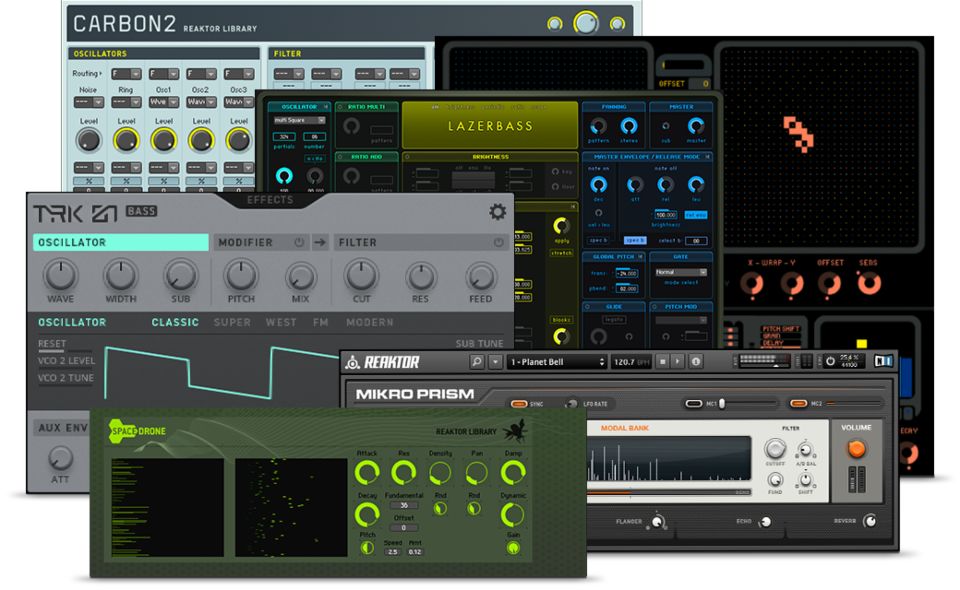
Whatever you’re equalising, therefore, there’s a whole new sonic world to explore, thanks to the Vintage EQ plug-ins.Our top-selling course "Music Production Essentials" is NOW ONLY $25! Get this amazing course for a limited time only. In many cases, it’s often the interaction between multiple bands and controls – like the aforementioned Low Boost and Attenuation on the Pultec – that go a long way to define these units’ signature sound.


Like all pieces of ‘classic’ audio hardware, though, it’s worth appreciating the finer sonic details and operational quirks that have made these devices studio stalwarts. The addition of the Vintage EQ plug-ins to Logic’s sonic arsenal significantly improves the quality of mixes you can produce. It’s worth noting that you can use the Drive control even with the EQ flat, which is useful as a subtle enhancement technique in its own right, or alternatively, switch the various Drive characteristics between the different units (so that the Neve’s ‘Drive’ is paired with the API Graphic, for example). In practical terms, the Drive control adds a small amount of ‘sizzle’ to the output, in much the same way as increasing the saturation on a digital photograph. One feature common to all three Vintage equalizers is a Drive control, designed to replicate the small amount of soft saturation the original hardware equalizers would produce. The controls on the Pultec are slightly unconventional – for example, the Low section provides both a Low Boost and Low Attenuation that can be applied at the same time! Though somewhat counter-intuitive, the walk-through details some of the unique sonic quirks that the Pultec is famed for, which, of course, can be perfectly replicated on the Vintage Tube EQ. Technically speaking, the single plug-in is actually a replication of two valve equalizers – the shelving-like Pultec EQP-1A and the more mid-range-focussed MEQ-5 – hence the two power switches on the plug-in. Of all three equalizers, it’s arguably the Vintage Tube EQ that delivers the least precision, but the largest amount of mojo. Push the frequency harder, though, and Q will become sharper, applying a more focussed cut or boost to the signal. Put simply, Proportional Q means relatively small amounts of cut or boost will result in a musically-wide Q setting. That said, the API 560 is still a well-loved sound-shaping tool, partly thanks to its Proportional Q. On the whole, Graphic EQs tend to get a bad name in the studio, mainly because the band divisions are relatively coarse by comparison to a fully-sweepable parametric equalizer.

The API 560, otherwise known as Vintage Graphic EQ, is interesting as it’s Logic’s only example of a graphic equalizer. Mids are catered for with a semi-parametric band (from about 360Hz to 7kHz), leaving the tops covered by a silky shelving EQ set at 12kHz. One key difference to note is that the original 1073 had stepped controls, while the newer Vintage Equalizer has sweepable frequency controls that let you ‘tune-in’ to a specific frequency. The low-end can be controlled using the combination of a passive (18dB/octave) high-pass filter along with a low shelving Equalizer with an adjustable frequency setting (from 35-220Hz). As the name suggests, the Vintage Console EQ is a great ‘mixing’ equalizer, with a set of simple, focussed controls. Like all these Vintage EQ plug-ins, the Vintage Console EQ isn’t a tool you’d turn to for surgically-precise timbral modification, but more a broader ‘brush stroke’ for changing the colour and representation of a sound. Like many console EQs produced in the 70s, the 1073 is a relatively simple equalizer: with a low-cut, two shelving sections and an adjustable mid cut/boost. The Neve 1073 is what Logic refers to as the Vintage Console EQ, arguably harking back to its original inclusion as part of a Neve A88 console. Although Apple can’t reveal the actual equalizers that have been modelled, it’s pretty obvious to visually identity them as a Neve 1073, API 560, Pultec EQP-1A and MEQ-5.

If you’re used to Logic’s Channel EQ plug-in, the first experience of using the Vintage EQ can seem a little daunting, especially as you won’t be aware of quirks and operational features of the Vintage EQ models on offer.


 0 kommentar(er)
0 kommentar(er)
